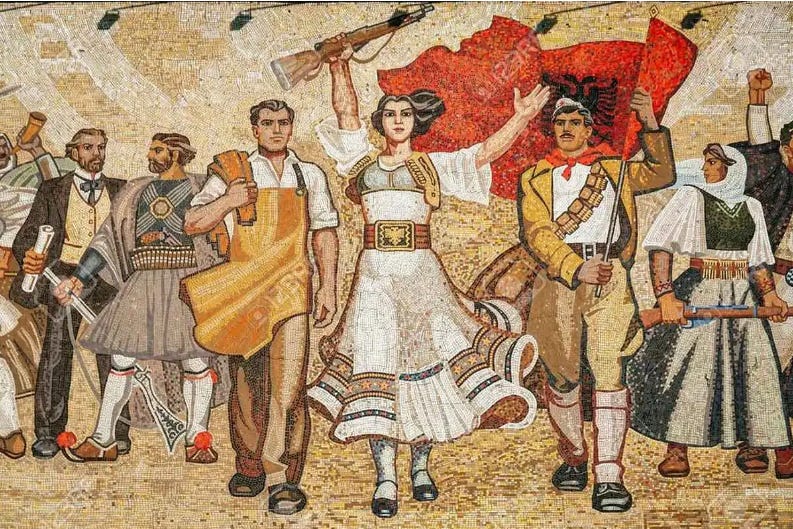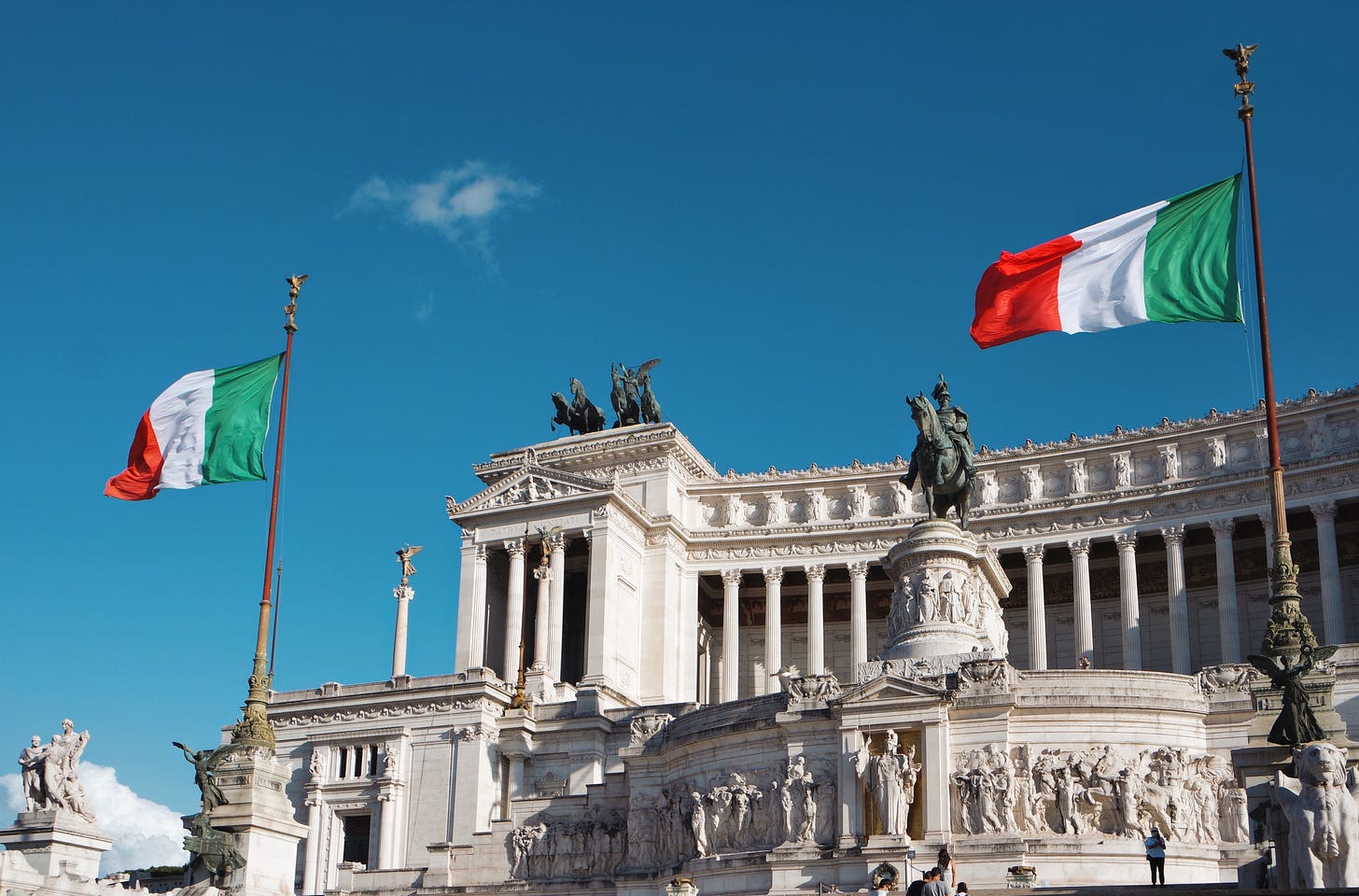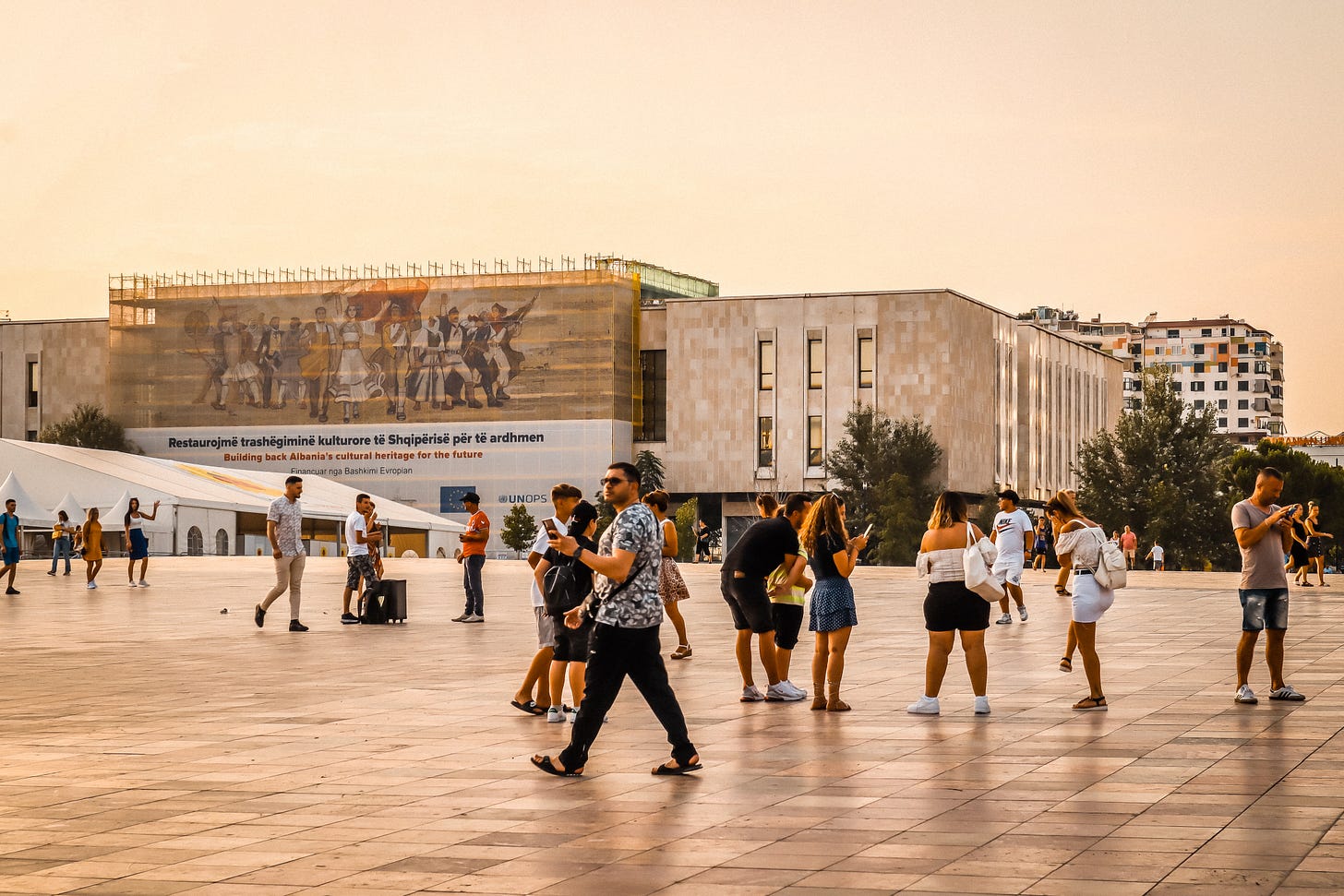How Does Communism Continue to Affect Albania Today?
Although communism ended over three decades ago, its effects on Albanian society linger
To the average tourist visiting Albania for the first time, communism is understood to be a relic of the past.
A visit to the country’s premiere museum on the topic, Bunk Art, takes the visitor on a horror-filled journey back in time to an era of mass government surveillance, executions of political opponents and state-enforced atheism.
But Enver Hoxha, the country’s communist dictator, died in 1985, and since then, the country has rushed headfirst into modernity.

Perhaps a little too fast.
Rinas International Airport, the capital’s main gateway for foreigners who want to experience the magic of this formerly isolated country firsthand, has tripled the size of its terminal and is constructing even more. This winter, the airport welcomed Ryanair to the lineup of discount airlines that have made Tirana their hub (Wizz preceded them, with dozens of daily flights to Italy).
The government estimates that 10 million tourists will have visited Albania in 2023 - not bad for a country of 2.8 million souls.
And, of course, the never-ending stream of Mercedes Benzes that grace the streets of Blloku, the former Communist party’s headquarters (which has since become a trendy hub for bars, clubs and high-end restaurants) further attest to a culture of conspicuous consumption.
So, in short - communism is very much dead in Albania.
Right?
The Last Communist State in Europe
Albanians officially shrugged off the chains of communism in December 1990, when popular protests shook the capital city of Tirana and led to the formation of the Democratic Party a few months later.
The end could not have come faster. Hoxha had ruled with an iron fist and ran the country much like modern-day North Korea: the government controlled the means of communication and all mass media, so Albanians stayed in the dark about significant world events like the fall of the Iron Curtain and the collapse of the Berlin Wall. Foreigners who wanted to visit the country were forced to get haircuts and don drab, state-approved outfits. Children were indoctrinated at school into reporting parents who dared to criticize the dictator or the ruling party to the feared Sigurimi secret police.
Thousands of Albanians were imprisoned, sent to concentration camps and tortured by this unit, which by the 1980s was estimated to have formally recruited tens of thousands of people as well as a third of the population into its spy network.
And, of course, the practice of any and all religion was outlawed. Bishops and hoxhas (the Albanian word for a Muslim clerical leader - an imam) were rounded up and thrown in jail or executed. Churches and mosques around the country were destroyed or converted into government facilities, and the party even passed legislation in 1976 that declared Albania the first atheist country in the world (although the Soviet Union had technically beaten them to it years earlier).
In short, it was a heavy-handed totalitarian communist state that banned dissent, the practice of religion, free expression and interaction with the outside world.
The Ghosts of Communism
The country has since made its (bloody, messy, imperfect and yet highly-admirable) transition to liberal democracy. People in Albania today are free to practice religion, associate with any (or no) political party and march against the government pretty much like any Westerner might in his or her home country, with impunity.
But to answer the earlier question of whether or not communism is a thing of the past, we have to look under the hood of Albanian society. No tight-fisted ideology can rule a country for nearly five decades and not leave its mark on the citizenry.
Here are just three I’ve noticed in my time living here.
Conformity Persists
Walking the streets of Tirana, you start to notice that a lot of people dress more or less the same.
Women strut the streets of Tirana proudly wearing the latest from Zara and H&M (both of which recently opened branches in the country’s premier mall, Tirana East Gate), not to mention Gucci and Fendi.
So at first, it feels like you’re in any other European capital.
But then you start to notice how everyone looks…the same.
There’s the typical nose job, which you will never unsee once you learn to recognize it.
At first when I moved here I thought women had amazing genes; then I realized they were all getting Botox very young, many in their twenties.
(Smiles never quite reaching the eyes is a dead giveaway.)
Thick mascara. Garish shades of lipstick. Lots of foundation. Heavily stenciled eyebrows and super-straight hair.
You see the same sort of dynamic playing out with Albanian men as well - most wear the same type of skinny jeans, a black or white t-shirt and a simple black vest over it. For the most part, men get the same high-fade haircut and walk around with a fanny pack around their waists or slung across their chests.
These are the hallmarks of the new Albanian uniform - people are now allowed to dress however they want, yet still seek conformity and allegiance to a particular type of approved look.
The Short-Lived Linguistic & Commercial Hegemony of Italian
Just in the twentieth century, Italy’s interest in Albania culminated in military agreements, trade pacts, and, ultimately, a fascist occupation of the country shortly before the start of World War II. Italy was the most influential Western country to have a relationship with Albania.
Many Albanians during and immediately after communism, therefore, learned Italian.

The shortest distance between Albania and Italy is a mere 70 kilometers (40 miles). When Albanians attempted to tune their radios in to foreign stations during communism, they often had access only to Italian stations.
As a former call center manager who interviewed and hired hundreds of Albanians to test their English language skills, I got to experience the effects of this curious quirk of history firsthand.
Emerging from the long rule of communism, learning Italian was seen as a first, timid step towards modernity and interaction with the rest of the world. An entire generation of Albanian children and adults spent the 90s watching Italian soap operas, cartoons, and TV shows once the country started liberalizing its media landscape - an opening Italy was happy to fill.
You’ll therefore find that Albanians under the age of thirty who speak a second language largely know English - they grew up watching YouTube videos in the language and listening to American rap - while those above thirty are fluent in Italian.
Today, it’s hard to find young people who speak or understand Italian, even in Tirana. Italian-language call centers all over the capital thrived in the 90s and early 2000s by providing low-cost outsourced labor to Italian companies looking for operators to handle customer service inquiries and sell products over the phone in the homeland of cappuccinos and cannolis.
But the industry has almost entirely collapsed as the supply of Albanian Italian-speakers has dwindled, raising labor costs past the point of profitability for many businesses.
A Generational Divide Over Gender Roles
The other notable effect of communism you’ll notice is a stark generational divide over certain social norms.
The older generation, which came of age before and in the years before the collapse of the communist regime, is attached to fixed, traditional ways of living.
(I mention some of these cultural divides in my first Substack post.)
Gender roles are still quite fixed in Albanian society. It’s my impression that these expectations remain because of the pressure of the older generation rather than the sincere beliefs of younger Albanians, whose lack of religious upbringing in a former atheist state and desire to emulate the West makes them overwhelmingly liberal.
Women are still expected to be mothers and men are pressured to find careers and jobs that will provide for a future family above all else.
Older Albanians wrinkle their noses at public displays of affection (if you ever see a couple making out in Tirana, you can safely assume they’re foreigners). Young people tend to hide their dating lives from view until an engagement is announced (only then is a young couple allowed to move in together).
Even though Albania is probably one of the most tolerant countries in the Balkans, non-heterosexual relationships and dating largely take place in the shadows of society and are confined to underground venues and spaces.
Once a couple is married, the woman is largely expected to care for the children. However, with the ever-rising cost of living in Tirana (where approximately half the Albanian population lives) making it close to impossible for a household to subsist on a single average salary, women inevitably pursue careers and work, too.
This has created a widespread sense of disenchantment among many young women in Albania, who are just as (if not more) educated than their male counterparts and yet overwhelmingly bear the burden of raising children and other domestic duties. They wear both traditional and modern hats, an exhausting role.
These are just some of the legacies of communism in Albania, from the perspective of a foreigner living among its inheritors. The weight of enforced homogeneity, limited exposure to foreign media and keeping an entire generation frozen in the morals of the mid-twentieth-century has led to a series of curious developments in this now wide-open country along the Mediterranean sea, where foreigners with their modern sensibilities are streaming in at a rate faster than the country can keep up with.

Albanians feel a burning desire to play catch up with the West - people have gone from one extreme to the next, creating a sometimes odd place-between-the-places where the traditions of yore remain alive and kicking alongside the newest iPhones, glitzy cars and Botox. Albanians feel like they were left in the dark for so long under communism that the moment the pendulum was released, it swung towards modernity with an intense pent-up energy.
The country and its citizens’ progress is immense - it’s hard to imagine that just thirty years ago, Albania was shaking off the chains of communism and formally opening up its borders. It will be interesting to see how the country continues to change as it deepens its integration with the rest of the world and more and more tourists flood its shorelines, urban cafes, villages and mountains.
Feel free to explore my follow-up post about the legacy of Communism in Albania here or below, where I explore themes and feedback from Albanians who didn’t agree with everything I wrote here.
How Does Communism Continue to Affect Albania Today? Part II
Last week, I published a piece about the lingering effects of communism on Albanian society (I recommend reading that post first! This one can be understood on its own, but the previous context will make reading this one a bit easier). I got mixed reactions from readers. Some people really enjoyed what I had shared, but two of my closest confidantes in A…






They wear both traditional and modern hats, an exhausting role.----The same in China, that is why I didnt want to have a baby. that is just too much burden.
You are the best writer !🥰